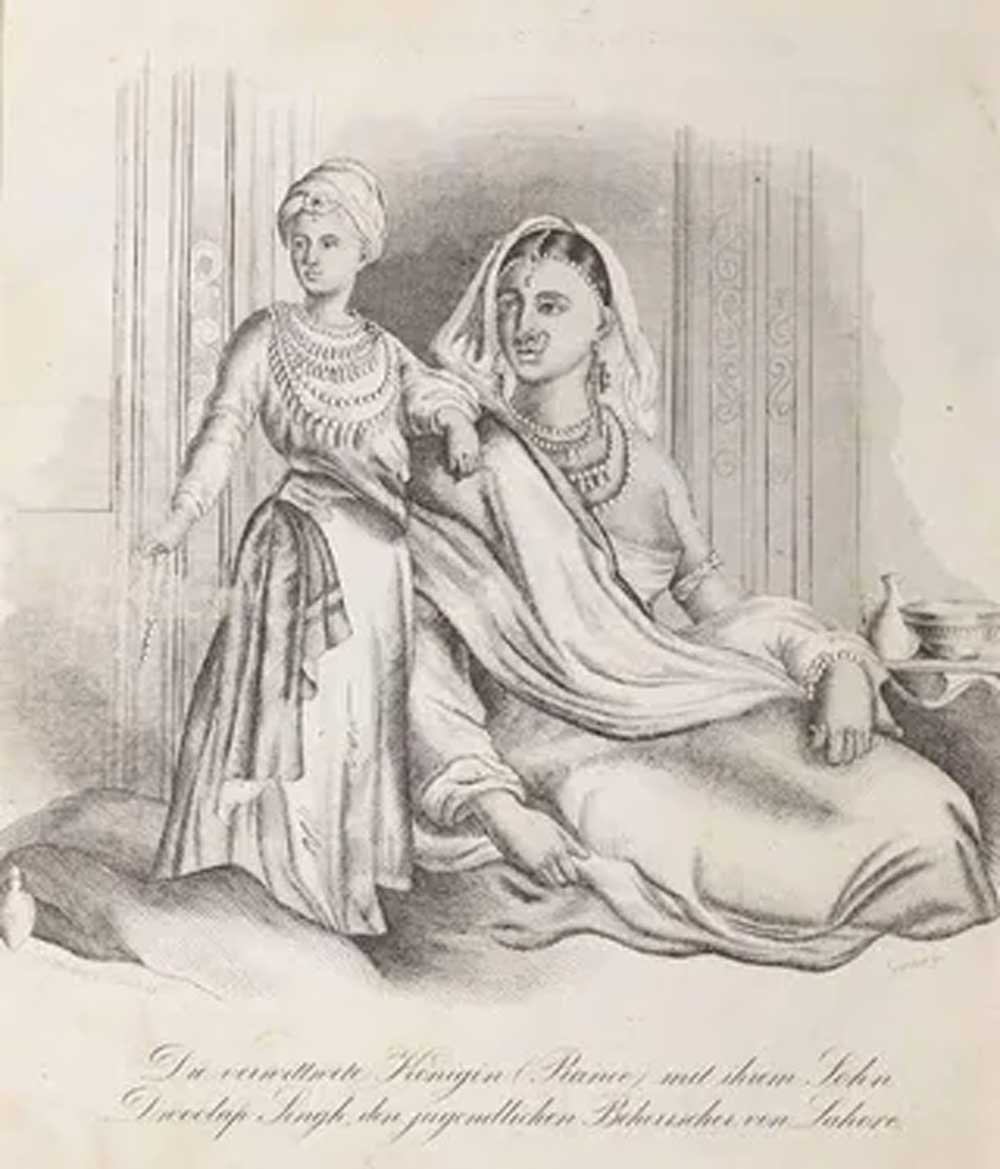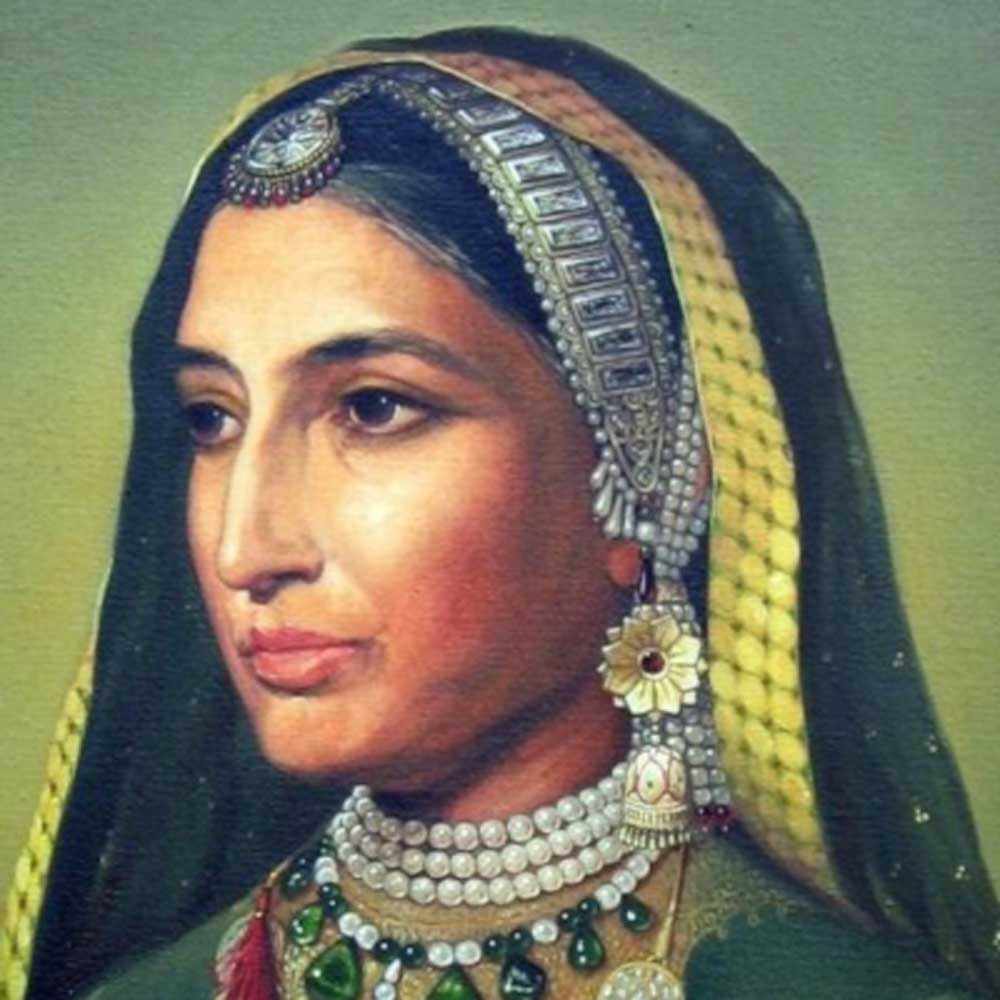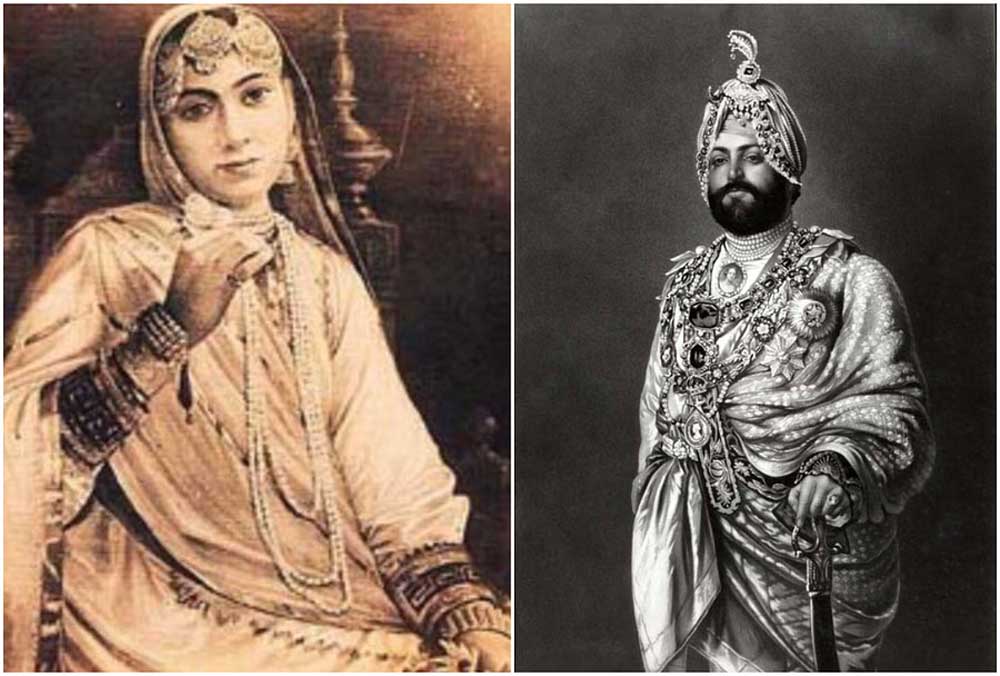History often remembers kings and conquerors. But hidden in its folds are stories of queens who challenged empires, defied expectations, and fought for their people. One such woman is Maharani Jind Kaur, the last queen of Panjab and mother of the last Sikh emperor, Maharaja Duleep Singh.
Bold, strategic, and fiercely determined, Jind Kaur’s legacy stands as a powerful reminder of resistance in the face of British colonial might.
Born in 1817 in Chachar village (now in Pakistan), Jind Kaur was the daughter of Manna Singh Aulakh, an influential noble in the court of Maharaja Ranjit Singh, founder of the Sikh Empire. Her beauty and intelligence caught the king’s attention, and she became his youngest and last wife.

In 1838, she gave birth to Duleep Singh, who would later become the ruler of a declining empire at the tender age of five.
Queen Regent Of A Crumbling Empire
Following Maharaja Ranjit Singh’s death, the Panjab Empire was thrown into political chaos. After a series of assassinations and power struggles, young Duleep Singh was crowned Maharaja in 1843. But it was Jind Kaur, his mother, who took over as Regent, governing on his behalf.
Her regency was marked by shrewd political manoeuvring. Despite a court full of men unwilling to take orders from a woman, Jind Kaur became a force to be reckoned with. She attempted to curb corruption, reorganise the army, and protect the Sikh Empire from the ever-expanding British East India Company.
War And Betrayal

The First Anglo-Sikh War (1845–46) and Second Anglo-Sikh War (1848–49) led to heavy losses. After the British emerged victorious, they annexed Panjab in 1849 and dethroned the child-king Duleep Singh.
The British viewed Maharani Jind Kaur as a threat. Labelled the ’Messalina of the Panjab‘ (a reference to a Roman empress known for her cunning), she was arrested and forcibly separated from her son. She was imprisoned in the fort at Chunar and later exiled to Banaras, under constant British surveillance.
In exile, Jind Kaur lived in isolation, writing letters to various allies and plotting resistance. But with her son taken to England, Christianised, and assimilated into British aristocracy, she remained powerless – yet never gave up hope.
In a daring escape in 1860, she fled British custody and reached Nepal, where she was given asylum and respect. For 11 years, she remained in Kathmandu, her influence still looming in British minds.
Reunion In England

In 1861, after relentless petitioning, Duleep Singh was finally allowed to reunite with his mother. Their emotional reunion in Calcutta after 13 years apart was followed by her journey to England - making her one of the first Indian queens to reach British shores.
Blind and ageing, she spent her final days in her son’s care in England. She died in 1863 and was later cremated in Bombay (now Mumbai). In 1997, her ashes were returned to Panjab, and now rest near Ranjit Singh’s samadhi in Lahore.
Maharani Jind Kaur was more than a queen - she was a symbol of resistance, a strategist, and a mother who stood up to the might of an empire. Despite British attempts to erase her influence, her legacy lives on.
Jind Kaur’s defiance shattered gender norms of her time. At a time when queens were expected to retire into silence, she took command of armies, faced colonisers, and fought for her son and kingdom.
Her story is a reminder that courage isn’t always about victory - sometimes, it's about the fight itself.